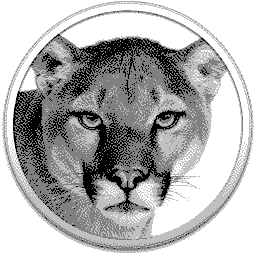10th Jul 2012 What Mountain Lion Left Behind

For those of us already running Mac OS X Lion, Mountain Lion will be a minor update. Continuing the iOSfication of Mac OS X, Mountain Lion brings even more apps and features back to Mac from our iPhones, iPads, and iPod Touches. Unfortunately not everyone will be able to take advantage of the polish Apple’s latest cat provides. Mountain Lion, like its predecessors will be leaving some Macs, and some Mac OS X features behind. The list might not be as long as last year’s, but any feature worth using is a hard feature to lose.
Hardware
At first glance Mountain Lion’s system requirements look pretty straight forward, Mac OS X v10.6.8 or later installed, 2GBs of memory or greater, and at least 8GBs of available hard disk space. It is not until you get to the list of supported models that you realize something is up, and not all of the Macs that can run Mac OS X 10.7 will be able to make the move to Mountain Lion.
- White plastic iMacs with Model Identifiers iMac5,1, iMac5,2, and iMac6,1 will not make the cut due to outdated graphics chipsets.
- All plastic MacBooks that pre-date the aluminum unibody redesign with Model Identifiers MacBook2,1, MacBook3,1, and MacBook4,1 will not make the cut due to outdated integrated Intel graphics chipsets.
- MacBook Pros released prior to June 2007 with Model Identifiers MacBookPro2,1, and MacBookPro2,2 will not make the cut due to outdated graphics chipsets.
- The original MacBook Air with Model Identifier MacBookAir1,1 will not make the cut due to outdated integrated Intel graphics chipsets.
- The Mid-2007 Mac mini with Model Identifier Macmini2,1 will not make the cut due to outdated integrated Intel graphics chipsets.
- The original Mac Pro and its 8-core 2007 refresh with Model Identifiers MacPro1,1, and MacPro2,1 will not make the cut due to a 32-bit boot EFI, although there is a work around.
- The Late 2006 and Early 2008 Xserves with Model Identifiers Xserve1,1, and Xserve2,1 will not make the cut due to a 32-bit boot EFI, although the same work around may apply.
The official Mountain Lion release date is just around the corner, and as it approaches I am sure we will learn more about which models are supported, and what workarounds can be taken to update an aging Mac one last time.
RSS
RSS has been part of Mac OS X since the release of Safari 2 and Mac OS X 10.4 on April 29th, 2005. One of Mac OS X Tiger’s 150+ new features, RSS in Safari allows users to read news feeds from within the browser and stay up-to-date with new content as it is published. Safari’s RSS capabilities were never a threat to dedicated readers, but provided a quick way to peruse a publications feed, distraction free, prior to subscribing.
Starting the release of Mac OS X Leopard on October 26th, 2007, Apple took a second shot at publicizing the potential of RSS by including it in Mail 3. RSS in Mail gives users the ability to subscribe to feeds and read articles alongside the email in their inbox. Mail proved to be a better RSS reader than Safari, but neither method provided much in the way of sharing articles, or syncing feeds between devices. In Mountain Lion both RSS in Safari and Mail are gone, replaced with Reading List in the browser and the chance at using a dedicated client instead of a half-hearted attempt in Mail.
X11
XQuartz (commonly referred to as X11.app) is Apple’s version of the X server, a component of the X Window System, for Mac OS X. The current version of XQuartz implements support for hardware-accelerated 2D graphics (in versions prior to 2.1), hardware OpenGL acceleration and integration with Aqua, the Mac OS X graphical user interface. X11 was initially available as a downloadable public beta for Mac OS X v10.2 and later included as a standard package for Mac OS X v10.3, which can be downloaded from Apple’s website. In Mac OS X v10.4, X11 was an optional install included on the install DVD. Since Mac OS X v10.5, X11 is installed by default. As of OS X Mountain Lion, Apple has dropped dedicated support for X11.app; users are directed to the open source XQuartz project instead.
Because The X Windowing System and X11.app were written with the MIT open source license these technologies will continue to be available for Mac OS X even if Apple does not want to support them. I suspect X11’s lack of Retina display support, and Apple’s move away from freely distributed applications might have something to do with X11.app’s abandonment.
Mac OS X
The biggest feature missing from Mountain Lion might be the Mac in its name. Starting with the release of 10.8 the name of Apple’s Macintosh desktop operating system will be OS X. The “Mac” has been removed from the name.
The first version of Mac OS was 7.6 released in January of 1997. Prior to that the Macintosh operating system was referred to as “System Software” and could be acquired for the price of floppies from many Apple resellers, and user groups. When Steve Jobs returned to the company he founded in 1996, the Macintosh operating system was officially rebranded as “Mac OS”, and Apple began charging for new releases.
“Mac” is a powerful brand name among computer enthusiasts, but “Apple” is recognizable by almost everyone. The removal of Mac from OS X might signal a future where the lines between OS X and iOS begin to blur, and we are all buying Apple’s instead of Macs. Whatever the course, I’m hoping that during the continued iOSfication of OS X we don’t forget all of the good things the Mac has given us over the years.